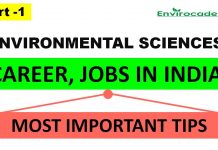Q 1: Arrange the environmental movement in chronological order
- Silent valley struggle
- Chipko movement
- Appiko movement
- Narmada bachao movement
Choose the correct answer from the option given below
- A,B,C,D
- B,A,C,D
- A,D,B,C
- A,B,D,C
Q 2: match list-I (processes) with List ii (Energy Transfer)
| list-I | List ii |
| Processes | Energy Transfer |
| A. conduction | I. Energy is transferred by motion of a fluid |
| B. convection | II. Energy is transferred in the form of electromagnetic wave through a vacuum. |
| C. Radiation | III. Energy is transferred between two points in a material at different temperatures |
| D. Evaporation | IV. Energy is lost through a phase change |
Choose the correct answer from the options given below
- A-II, B-I, C-III, D-IV
- A-II, B-IV, C-III, D-I
- A-III, B-IV, C-II, D-I
- A-III, B-I, C-II, D-IV
Q3: Hyperthermophilic microorganisms prefer temperatures in excess of.
- 45 °C
- 80 °C
- 65 °C
- 70 °C
Q4: Given below are two statements one is labeled as assertion A and other is labeled as Reason R
Assertion A: some countries are immune to the impacts of climate change
Reason R: the net contribution of the some countries is less than 1% towards the global CO2 as a whole.
In light of the above statements choose the correct answer from the options given below
- Both A and R are true and R is the correct explanation of A
- Both A and R are true and R is NOT the correct explanation of A
- A is true but R is false
- A is false but R is true
Q 5: provision of extended producer’s Responsibility (EPR) of producer, importer and brand owner for collecting back the waste generated by their product has been in the
- Solid waste management Rules, 2016
- Construction & Demolition waste management Rules, 2016
- Plastic waste management Rules, 2016
- E-waste (management) Rules, 2016
- Biomedical waste management Rules, 2016
Choose the correct answer from the options given below
- A,B,D only
- B,C,D only
- C,D,E only
- A,B,C,D only
Q 6: According to the solid waste management rule 2016, a landfill site should be at a distance of how many meters away from a pond?
- 200 meters
- 150 meters
- 100 meters
- 50 meters
Q 7: if Ʃx = 230, Ʃx2 = 6500 and the number of observation N= 10, the value of standard deviation is
- 9
- 10
- 11
- 12
Q 8: what is the correct sequence in decreasing order of hardness among the following?
- Gypsum
- Fluorite
- Feldspar
- Topaz
Choose the correct answer from the options given below.
- C>D>B>A
- D>B>C>A
- D>C>B>A
- C>D>A>B
Q 9: soil humic acids are
- Insoluble in alkali
- Insoluble in acid
- Soluble in acid
- Insoluble in both acid and alkali
Q 10: match list I (rock types) with list II (characteristics)
| List i | List ii |
| Rock types | characteristics |
| A. Rudaceaus | I. Racks consisting mainly of silt and siltstones |
| B. Arenaceaus | II. Rocks consisting mainly of gravels, pebbles, cobbles and boulders |
| C. Silt rocks | III. Rock consisting mainly of dust, mud and clay |
| D. Argillaceaous | IV. Rock consisting mainly of sand |
- A –II, B-II, C-IV, D-III
- A-II, B-IV, C-I, D-III
- A-I, B-IV,C-II,D-III
- A-IV, B-I, C-III, D-II
Q 11: match List I (Air pollutants) with List II (control technique/Equipment)
| List -I | List -II |
| Air pollutants | control technique/Equipment |
| A. PM2.5 | I. selective catalytic reduction |
| B. SO2 | II. Electrostatic precipitator |
| C. NOx | III. cyclone collectors |
| D. coarse particulate matter | IV. scrubber |
Choose the correct answer from the options given beloW
- A-I, B-II, C- III, D- IV
- A-II, B-IV, C- I, D- III
- A-I, B-IV, C- II, D- III
- A-IV, B-I, C- III, D- II
Q 12: which one among the following solar collectors has the highest concentration Ratio or CR
Value (a measure of the efficiency of the solar collators)
- Compound parabolic collector with a plane receiver
- Cylindrical parabolic collector
- Frensel lens collector
- Paraboloid dish collector
Q 13: According to National Air Quality Standard (NAAQS) the annual limits for PM10 and PM2.5 in ecological sensitive areas (in mg/m3)
- 100 and 60 respectively
- 60 and 40 respectively
- 40 and 20 respectively
- 40 and 15 respectively
Q 14: Under the GRIHA Norms, a Building securing 57 points on a 100 point scale will be assigned which of the following star ratings?
- Two star
- Three star
- Four star
- Five star
Q 15: consider the following statements pertaining to sampling theory
- The standard deviation of the sampling distribution of a statistic is known as its standard error
- The precision of the sampling estimate of same population parameter is the reciprocal of the standard error of the sampling distribution of the estimate
- A Type – I error in hypothesis occurs when we accept a wrong null hypothesis
- A Type- II error in hypothesis testing when we reject a true null hypothesis
Choose the correct answer from the options given below
- A and B only
- B and C only
- A and C only
- C and D only
Q 16: consider the following statement regarding skewness:
- For a positively skewed distribution the value of the mean is the greatest among the mean, median and mode.
- For a negatively skewed distribution, the median is greater than the mean.
- Karl pearson’s coefficient of skewness always lies between the limits ±1
- Boweley’s coefficient of skewness always lies between the limits ±1
Choose the correct answer from the options given below
- A, B and D only
- B, C and D only
- A, C and D only
- A, B and D only
Q 17: the fast neutrons produced in the process of nuclear fission of 235U have an average energy of about
- 100 KeV
- 1.0 MeV
- 2.0 MeV
- 2.6 MeV
Q 18: match List I (Environmentally significant Days) with List II (Dates)
| List –I | List -II |
| Environmentally significant Days | Dates |
| A. World Ozone Day | I. 16 September |
| B. world Habitat day | II. 21 march |
| C. world forest day | III. 5 October |
| D. world water day | IV. 22 march |
Choose the correct answer from the options given below:
- A-IV, B-III, C- I, D- II
- A-II, B-I, C- IV, D- III
- A-I, B-III, C- II, D- IV
- A-III, B-I, C- IV, D- II
Q 19: Identify the correct sequence of the following countries/ group of countries credited with the highest to the lowest share of cumulative CO2 emission to date:
- USA
- China
- EU
- India
- Japan
Choose the correct answer from the options given below
- A, B, C, E, D
- A, C, E, D, B
- A, C, B, D, E
- A, C, B, E, D
Q 20: consider the following statement regarding ex-situ bioremediation of contaminated soil:
- Bioremediation technique can be applied at or very near the site of contamination
- Biopiles and windrow composting are the most dominant ex situ bioremediation techniques
- Biopiles can be formed with large volume of soil than windrows
- Both biopiles and windrow composting are anaerobic process
Choose the correct answer from the options given below:
- A and B only
- A and D only
- A, B and C only
- A, B and D only
Q 21: At 1 atm pressure and 25 °C temperature, NO2 concentration of 80 ppb is equivalent to
- 40 µg/m3
- 160 µg/m3
- 240 µg/m3
- 150.4 µg/m3
Q22: consider the following statements regarding the solubility of gases in water:
- The concentration of a dissolved gas in water is proportional to its partial pressure in the air
- The solubility of a gas in water remains unaffected as other dissolved material in it increases
- The solubility of a gas increases as temperature increase
Q 26: A rock composed entirely of crystal is said to be:
- Hypocrystalline
- Microcrystalline
- Holoocrystalline
- Holohyaline
Q 27: Match List I (Element) with List II (Characteristics)
| List I | List II |
| Elements | Characteristics |
| A. Lithophile | I. Occur mainly as sulphides |
| B. Chalcophile | II. Gaseous element do not generally form compounds |
| C. Siderophile | III. Occur mainly in oxygen compounds |
| D. Atmophile | IV. Occur mainly as native elements |
Choose the correct answer from the options given below:
- A – I, B – II, C – III, D – IV
- A – I, B – IV, C – III, D – II
- A – III, B – IV, C – I, D – II
- A – III, B – I, C – IV, D – II
Q 28: Diesel Exhaust Particles (DEP), known to manifest asthma- like features, are responsible for
(A) Chronic airway inflammation
(B) Mucus hypersecretion
(C) Airway expansion
(D) Marked infiltration of eosinophlis
(E) Airway hyperresponsiveness
Choose the correct answer from the options given below:
- A, C, D and E only
- A, B, C, and D only
- A, B, D and E only
- B, C, D and E only
Q 29: Which one of the following silicate clay minerals exhibits highest interlayer expansion?
- Montmorillonite
- Vermiculite
- Chlorite
- Kaolinite
Q 30: Consider the following regarding the incineration process of solid waste.
A. It is an oxidation process.
B. The two major combustible chemical elements are carbon and hydrogen.
C. Cellulose in the biowaste is transformed into organic acids.
D. Excess source of air is not necessary.
Choose the correct answer from the options given below:
- A and C only
- B and C only
- A and B only
- B and D only
Q 31: Following are the examples of Persistent Organic Pollutants (POPs)
A. Dioxin
B. Volatile Organic Compounds (VOCs)
C. Poly Chlorinated Biphenyl (PCBs)
D. Furan
E. Organochlorine pesticides
Choose the correct answer from the options given below:
- A, B and C only
- A, B, C and D only
- A, D and E only
- A, C, D and E only
Q 32: Given below are two statements: One is labelled as Assertion A and other is labelled as Reason R
Assertion A: Solar and wind energy systems require quite large structures relative to power produced.
Reason R: Energy flux densities associated with solar energy and wind energy are on average small.
In light of the above statements, choose the most appropriate answer from the options given below
- Both A and R are correct and R is the correct explanation of A
- Both A and R are correct and R is NOT the correct explanation of A
- A is correct but R is not correct
- A is not correct but R is correct
Q 33: The chemical composition of CFC -113 is
- CF2ClCFCl 2
- CFHClCFCl 2
- CF3CF2Cl 2
- CF2HCF2Cl 2
Q 34: The maximum cross-section for the fusion reaction + is reached at energies of nuclei at
- 10 keV
- 100 keV
- 1.0 keV
- 17.6 keV
Q 35: What is the maximum period valid for granting Environmental Clearance (EC) for mining projects?
- 30 Years
- 10 Years
- 5 Years
- 20 Years
Q 36: Which of the following are the dominant products of anaerobic digestion of municipal solid waste?
- CO2 and H2
- CH4 andCO2
- CH 4 ,CO2 and H 2
- O2 andH2S
Q 37: Relative contribution (%) of the Green House Gases to global warming in decreasing order
A. Carbon dioxide
B. Methane
C. CFC -12
D. Nitrous oxide
Choose the correct answer from the options given below:
- A B C D
- A B D C
- C A D B
- C A B D
Q 38: The Environmental Relief Fund was created under:
- Environmental Protection Act
- Forest Conservation Act
- Public Liability Insurance Act
- Wildlife Protection Act
Q 39: Given below are two statements: One is labelled as Assertion A and other is labelled as Reason R
Assertion A: Regression analysis is suitable for two variables having a linear causal relationship between them.
Reason R: The causal relationship between two variables is never curvilinear.
In light of the above statements, choose the most appropriate answer from the options given below
- Both A and R are correct and R is the correct explanation of A
- Both A and R are correct but R is NOT the correct explanation of A
- A is correct but R is not correct
- A is not correct but R is correct
Q 40: Yaw control used in wind turbine generator is a:
- Microprocessor based control unit.
- The mechanism to keep the rotor axis along wind direction.
- The mechanism to keep the rotor axis perpendicular to wind direction.
- Gear mechanism to control the speed of the rotor when wind speed is extremely high.
Q 41: Match List I (Atmospheric stability) with List II (Lapse Rate)
| List I | List II |
| Atmospheric Stability | Lapse Rate |
| A. Absolutely Stable | I. ELR = DALR |
| B. Absolutely Unstable | II. ELR DALR |
| C. Conditionally Unstable | III. ELR DALR |
| D. Dry Neutral | IV. SALR ELR DALR |
Choose the correct answer from the options given below:
- A – II, B – III, C – I, D – IV
- A – II, B – III, C – IV, D – I
- A – III, B – II, C – IV, D – I
- A – III, B – II, C – I, D – IV
Q 42: What is the correct increasing order of following rocks by per cent volume in the earth’s crust?
A. Igneous rocks
B. Sedimentary rocks
C. Metamorphic rocks
Choose the correct answer from the options given below:
- A, B, C
- C, B, A
- A, C, B
- B, C, A
Q 43: Given below are two statements:
Statement I: Hazardous materials such as lead, mercury and hexavalent chromium in one form or other are present in electronic wastes.
Statement II: Landfilling of electronic waste is the best operation from the environmental viewpoint.
In light of the above statements, choose the correct answer from the options given below
- Both Statement I and Statement II are true
- Both Statement I and Statement II are false
- Statement I is correct but Statement II is false
- Statement I is incorrect but Statement II is true
Q 44: A Si-solar cell has the minority carrier saturation current = 60 nAm-2 and solar radiation induced current = 60 Am-2 . If the ambient temperature is 27 , what is the open-circuit voltage of the solar cell?
- 0.6 V
- 0.45 V
- 0.5 V
- 1.5 V
Q 45: Match List I (Analysis) with List II (Analytical techniques)
| List I | List II |
| Analysis | Analytical techniques |
| A. To analyze organic compounds of pollutants | I. SEM |
| B. To analyze the elemental composition of pollutants | II. XRD |
| C. Morphological analysis of pollutants | III. FTIR |
| D. To analyze crystalline materials of pollutants | IV. XRF |
Choose the correct answer from the options given below:
- A – III, B – II, C – IV, D – I
- A – IV, B – III, C – I, D – II
- A – III, B – IV, C – I, D – II
- A – IV, B – III, C – II, D – I
Q 46: Match List I (Organism) with List II (Ecosystem structure components)
| List I | List II |
| Organism | Ecosystem structure components |
| A. Earthworms | I. Producer |
| B. Grass | II. Secondary carnivore |
| C. Frogs | III. Primary carnivore |
| D. Hawks | IV. Detrivore |
Choose the correct answer from the options given below:
- A – IV, B – I, C – II, D – III
- A – I, B – III, C – IV, D – I
- A – III, B – IV, C – I, D – II
- A – IV, B – I, C – III D – II
Q 47: Which among the following is short-lived species in the atmosphere?
- CH4
- CO
- N2O
- OH radical
Q 48: In an objective type examination, hundred questions are given. One mark is given for each correct answer while 0.2 marks are deducted for each incorrect answer. The number of marks scored by students appearing in the examination is an example of:
- Nominal Variable
- Ordinal Variable
- Discrete Variable
- Continuous Variable
Q 49: Volatile Organic Compounds (VOCs) are of great concern because:
- Once such compounds are in the vapour state, they are difficult to control in the environment.
- Most of them are ozone depleting substances
- They contribute to a general increase in reactive hydrocarbons in atmosphere.
- They are less soluble in water.
Q 50: A strategy favoured by r- selection is:
- Higher proportional allocation to non-reproductive activities.
- Living in environments imposing high-density independent mortality.
- Living in environments imposing high-density dependent regulation.
- Higher proportional allocation to reproductive activities.
Q 51: Traditionally membranes have been classified based on the minimum size of the contaminant that is excluded from passing through the particular membrane. Arrange the following in the correct sequence of decreasing pore size
A. Reverse Osmosis
B. Nanofiltration
C. Microfiltration
D. Ultrafiltration
Choose the correct answer from the options given below:
- A, B, C, D
- D, C, B, A
- C, D, B, A
- D, C, A, B
Q 52: The transitional zone (ecotone) between freshwater and terrestrial ecosystem is known as
- Riparian Zone
- Hyporheic Zone
- Benthic Zone
- Epilimnetic Zone
Q 53: In the ‘A’ weighting network used in noise measurements, sounds of which of the following frequencies would require the least correction?
- 31.5 Hz
- 125 Hz
- 1000 Hz
- 12500 Hz
Q 54: What is the sound pressure level (in dB) associated with a root mean square pressure of 100 Pa?
- 148 dB
- 134 dB
- 120 dB
- 110 dB
Q 55: Which one of the categories of development project does NOT require an Environmental Impact Assessment (EIA report)?
- Category ‘A’ Projects
- Category ‘B2’ Projects
- Category ‘B1’ Projects
- Category ‘B1’ and ‘B2’ Projects
Q 56: Which among the following is the major product of slow pyrolysis of biomass?
- Biochar
- Biogas
- Carbon monoxide
- Carbon dioxide
Q 57: Heteromorphic rocks have
- Same mineral composition arising from similar magmas under different conditions of crystallization.
- Different mineral composition arising from similar magmas under different conditions of crystallization.
- Different mineral composition arising from different magmas under different conditions of crystallization.
- Same mineral composition arising from different magmas under different conditions of crystallization.
Q 58: Given below are two statements:
Statement I: Many bacteria carry plasmids, which are smaller pieces of DNA, also circular and self-replicating.
Statement II: Plasmids are vitally important in the context of the environmental biotechnology in that they frequently carry the genes for degradative pathways.
In light of the above statements, choose the most appropriate answer from the options given below
- Both Statement I and Statement II are correct
- Both Statement I and Statement II are incorrect
- Statement I is correct but Statement II is incorrect
- Statement I is incorrect but Statement II is correct
Q 59: A sample of air has a relative humidity of 60%. Given that the Saturated Vapour Pressure of water is 2260 Pa, calculate the vapour pressure of the air at
20 .
- 1460 Pa
- 452 Pa
- 3767 Pa
- 1356 Pa
Q 60: Basel convention (1989) was designed to:
- Reduce global waste generation.
- Control hazardous waste generation.
- Determine safe handling measures for hazardous waste.
- Prevent trans- boundary movement of hazardous waste between nations
Q 61: Which of the following is a correct statement regarding range as a measure of dispersion?
- The range is independent of the change of origin and scale.
- The range is independent of the change of origin but not of the scale.
- The range is independent of the change of scale but not of the origin.
- The range is not affected by fluctuations of sampling.
Q 62: Given below are two statements: One is labelled as Assertion A and other is labelled as Reason R
Assertion A: The risks from radioactive liquid wastes are caused under decontamination, solidification and disposal procedures.
Reason R: The chemicals in radioactive liquid wastes are hazardous in nature.
In light of the above statements, choose the most appropriate answer from the options given below
- Both A and R are correct and R is the correct explanation of A
- Both A and R are correct but R is NOT the correct explanation of A
- A is correct but R is not correct
- A is not correct but R is correct
Q 63: A random variable X follows Poisson distribution such that probabilities P(X = 1) and P(X = 2). Now consider the following statements.
A. The mean of this Poisson distribution is 2.
B. The variance of this Poisson distribution is 2.
C. Probability P(X = 0) is equal to .
D. Probability P(X = 0) = P(X = 1)
Choose the correct answer from the options given below:
- A, B and C only
- B, C and D only
- A, B and D only
- A, C and D only
Q 64: Consider the following statements regarding reactions of pesticides in soils:
A. They may vaporize into the atmosphere without any chemical change.
B. They do not move downward through the soil in solution form.
C. They are resistant to microbial decay.
D. They may be absorbed by plants.
Choose the most appropriate answer from the options given below:
- A and D only
- A, B and D only
- A, C and D only
- A and C only
Q 65: Consider the following statements regarding the phytoremediation of metal contaminated sites:
A. Natural abilities of certain plant species are utilized to remove or stabilize toxic metals.
B. Certain species termed hyperaccumulators can adsorb 50-100 times larger amounts of metals compared to most ordinary plants.
C. The best candidates for removal by phytoremediation are arsenic and cadmium.
D. The harvested hyperaccumulating plants can be recycled in agriculture.
Choose the correct answer from the options given below:
- A only
- A and B only
- A, B and C only
- A, C and D only
Q 66: Match List I (Instrument) with List II (Function)
| List I | List II |
| Instrument | Function |
| A. Campbell- Stokes Recorder | I. To measure the visible light flux |
| B. Pyraheliometer | II. To measure total solar irradiance on a plain surface |
| C. Pyranometer | III. To measure direct beam solar irradiance |
| D. Lux meter | IV. To measure the sunshine duration |
Choose the correct answer from the options given below:
- A – I, B – III, C – II, D – IV
- A – I, B – II, C – III, D – IV
- A – IV, B – III, C – II, D – I
- A – IV, B – I, C – II, D – III
Q 67: One Dobson unit represents the ozone layer of thickness
- One – hundredth of a centimetre
- One – tenth of a centimetre
- One – hundredth of a millimetre
- One – thousandth of a millimetre
Q 68: Given below are two statements: One is labelled as Assertion A and other is labelled as Reason R
Assertion A: Plants generally reflect radiation highly in the near- infrared region of the electromagnetic spectrum.
Reason R: Plant leaves generally contain high chlorophyll content.
In light of the above statements, choose the correctanswer from the options given below
- Both A and R are true and R is the correct explanation of A
- Both A and R are true but R is NOT the correct explanation of A
- A is correct but R is not correct
- A is not correct but R is correct
Q 69: Beside steam, next gas in order of abundance emitted from a volcanic eruption is
- Sulphur dioxide
- Nitrogen dioxide
- Carbon dioxide
- Carbon monoxide
Q 70: A N – fixing actinomycete associated with higher plants is:
- Azospirillum
- Clostridium
- Frankia
- Anabaena
Q 71: Given below are two statements:
Statement I: Covariance between two variables X and Y determines whether the correlation between them is negative or positive.
Statement II: The product of the standard deviation of two variables X and Y can be both positive or negative.
In light of the above statements, choose the most appropriate answer from the options given below
- Both Statement I and Statement II are correct
- Both Statement I and Statement II are incorrect
- Statement I is correct but Statement II is incorrect
- Statement I is incorrect but Statement II is correct
Q 72: Given below are two statements:
Statement I: In clear water, the reflectance is very high in the visible region of the electromagnetic spectrum.
Statement II: Pure water strongly absorbs radiation from the mid-infrared spectral region.
In light of the above statements, choose the correct answer from the options given below
- Both Statement I and Statement II are true
- Both Statement I and Statement II are false
- Statement I is correct but Statement II is false
- Statement I is incorrect but Statement II is true
Q 73: Given below are two statements: One is labelled as Assertion A and other is labelled as Reason R
Assertion A: Tropopause acts as a “lid’ limiting both convection and transport from the troposphere into the higher layers of the atmosphere.
Reason R: At troposphere height and at higher levels, the atmosphere is stable.
In light of the above statements, choose the correct answer from the options given below
- Both A and R are true and R is the correct explanation of A
- Both A and R are true but R is NOT the correct explanation of A
- A is true but R is false
- A is false but R is true
Q 74: Given below are two statements: One is labelled as Assertion A and other is labelled as Reason R
Assertion A: Isomorphous substitution is the source of constant charges on soil silicate clays.
Reason R: Cations of comparable size substitute each other in respective tetrahedral and octahedral sheets in silicate clays.
In light of the above statements, choose the correct answer from the options given below
- Both A and R are true and R is the correct explanation of A
- Both A and R are true but R is NOT the correct explanation of A
- A is true but R is false
- A is false but R is true
Q 75: Which of the following is NOT an epigeic earthworm species?
- Eisenia fetida
- Eisenia Andrei
- Metaphire posthuma
- Eudrilus eugeniae
Q 76: Consider the following statements about normal distribution:
A. This distribution is applicable to continuous random variables.
B. It is a symmetrical distribution.
C. The mean of a standard normal distribution is 1.
D. The standard deviation of the standard normal distribution is 1.
Choose the correct answer from the options given below:
- A, B and C only
- B, C and D only
- A, B and D only
- A, C and D only
Q 77: Ecological engineering is based on which one of the four classes of ecotechnology?
- Use of ecosystems to reduce a pollution problem
- Imitation of ecosystems to reduce pollution leading to constructed ecosystems.
- Recovery of ecosystems after significant disturbances.
- Use of ecosystems for benefit of humanity without destroying ecological balance.
Q 78: Given below are two statements:
Statement I: Increasing the productivity of forests to meet essential needs is one of the major objectives of the National Forest Policy, 1988.
Statement II: According to the National Forest Policy, 1988, no forest- based enterprise should provide employment to local people on a priority basis.
In light of the above statements, choose the correct answer from the options given below
- Both Statement I and Statement II are true
- Both Statement I and Statement II are false
- Statement I is correct but Statement II is false
- Statement I is incorrect but Statement II is true
Q 79: Identity the correct sequence of steps involved in the development of a model.
A. Validation
B. Formulation
C. Identification
D. Formulation
Choose the correct answer from the options given below
- A, B, C, D
- B, C, D, A
- C, B, D, A
- C, D, B, A
Q 80: Match List I (Statistical Test) with List II (Applications)
| List I | List II |
| Statistical Test | Applications |
| A. test | I. Testing the significance of difference of means |
| B. One- Way ANOVA | II. Testing the significance of a single mean |
| C. Paired t-test | III. Testing the goodness of fit between theory and experiment |
| D. Z- test | IV. Comparing more than two sample means |
Choose the correct answer from the options given below:
- A – I, B – II, C – III, D – IV
- A – II, B – III, C – IV, D – I
- A – III, B – IV, C – I, D – II
- A – IV, B – I, C – II, D – III
Q 81: Which of the following does NOT fall under the major goals of the National Mission for Green India?
- To increase forest/tree cover to the extent of five million hectares.
- To improve/enhance eco-system services like carbon-sequestration and storage, hydrological services and biodiversity.
- To increase forest- based livelihood income of about three million households.
- To study the traditional knowledge systems for community participation in adaptation and mitigation strategies.
Q 82: Given below are two statements:
Statement I: Cyclonic wind flow in the northern hemisphere is counter-clockwise.
Statement II: If you stand with your back to the wind in the northern hemisphere, low pressure will be to your left and high pressure will be to your right.
In light of the above statements, choose the most appropriate answer from the options given below
- Both Statement I and Statement II are correct
- Both Statement I and Statement II are incorrect
- Statement I is correct but Statement II is incorrect
- Statement I is incorrect but Statement II is correct
Q 83: The most toxic form of mercury in water is
- Hg2+
- H3C-Hg2+
- Hg0
- Hg+
Q 84: A small hydropower station based on the conversion of the kinetic energy of river water generates power. If the flow of water is 10 m3s-1 and speed of water is 3 ms-1, what is the maximum power the station can generate? (Assume efficiency of the power station to be 0.6)
- 18 KW
- 27 KW
- 36 KW
- 45 KW
Q 85: For a given noise signal, what would be the correct order of noise indices in terms of increasing values?
A. L10
B. L50
C. L1
D. L90
Choose the correct answer from options given below
- C A B D
- A B C D
- D C B A
- D B A C
Q 86: Consider the following statements regarding reactions in moderately acidic soils:
A. Base saturation is higher than that in the strongly acidic soils.
B. Free aluminium ions are abundant in soil solutions.
C. Aluminium hydroxyl ions act as exchangeable cations.
D. Small amounts of readily exchangeable hydrogen contribute to soil acidity.
Choose the correct answer from options given below
- A and B only
- A, B and C only
- A, C and D only
- B, C and D only
Q 87: Regarding Bharat Stage (BS-VI) vehicular emission norms, choose the correct statements:
A. BS (VI) emission norms are equivalent to Euro (VI) norms.
B. BS (VI) norms require the up-gradation of engine and emission control technology.
C. BS (VI) norms are applicable to all categories of the vehicles including two, three and four wheelers.
D. BS (VI) norms do not require any change in fuel quality.
Choose the correct answer from options given below
- A, B, C only
- B, C, D only
- A, C, D only
- A, B, C, D- All
Q 88: The Brundtland Commission Report was entitled
- Limits to Growth
- Our Common Future
- Sustainable Development
- Tragedy of Commons
Q 89: Given below are two statements.
Statement I: Leslie’s matrix population model is a discrete and age-independent model.
Statement II: The first row in Leslie’s projection matrix represents fertility.
In light of the above statements, choose the most appropriate answer from the options given below
- Both Statement I and Statement II are correct
- Both Statement I and Statement II are incorrect
- Statement I is correct but Statement II is incorrect
- Statement I is incorrect but Statement II is correct
Q 90: Which among the following atmospheric constituents have a negative Radiative Forcing?
A. Tropospheric ozone
B. Stratospheric ozone
C. Sulphate Aerosol
D. Nitrous oxide
Choose the correct answer from options given below
- A and B only
- B and C only
- C and D only
A and D only















